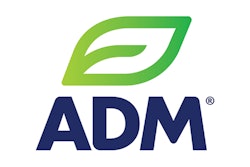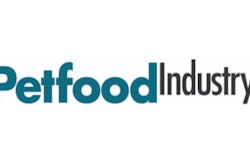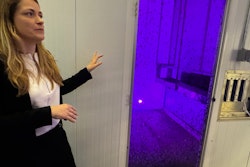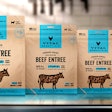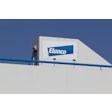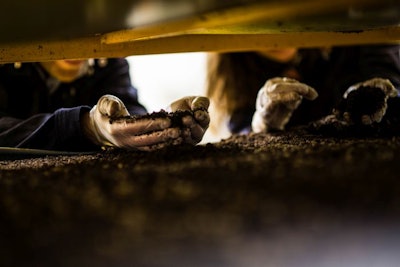
One person’s trash is another person’s treasure. Industrial symbiosis embodies that old saying. Industrial symbiosis involves integrating a range of businesses and utilities to share energy, water, labor and other resources. Often one industrial process will make use of byproducts from another process to improve efficiency for both. The goal is to reduce resource waste and pollution, while increasing collaboration and employment. For the pet food industry, this symbiosis can involve locating an ingredient production facility near the source of raw materials, thereby reducing both environmental and economic costs. Insect protein and oil producer, Innovafeed, plans to build a black soldier fly larvae (BSFL) production facility adjacent to a corn processing plant run by ADM in Decatur, Illinois. The facility will produce BSFL oil and protein.
Innovafeed conducted a lifecycle assessment of its current facility in France. The assessment results suggest that using an industrial symbiosis model could reduce the plant’s carbon footprint by 80%, Sean Madison, business development manager at Innovafeed, said during his presentation at Petfood Forum in Kansas City, Missouri on May 2, 2023.
Innovafeed’s industrial symbiosis system has already worked at the company’s facilities in France. Innovafeed opened a full-scale BSFL facility in Nesle, France in November 2020. The insects eat wheat co-products from local producer Tereos and uses steam from the nearby Kogeban biomass plant.
“We co-locate next to a starch manufacturer,” Madison told Petfood Industry, “We via a direct conveyance pipeline, convey the co-products directly into our facility. We use that as feed for our insects.”
Locating their BSFL facilities near the source of co-products makes the process more efficient in several ways. The co-products don’t need to be dried for transport. Since pipelines carry the co-products, trucks aren’t needed to transport the materials, reducing cost and pollution. Also, the BSFL facility can make use of steam produced by the grain processing plants.
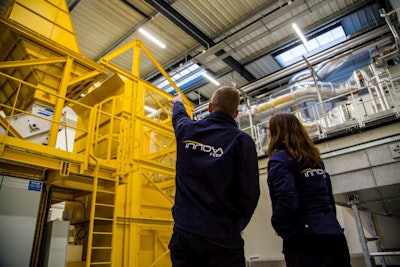
“We capture steam that would have dissipated into the atmosphere. And that accounts for about 60% of our energy uses usage for both the breeding and processing parts of the plant… We're planning to do the same thing with ADM in Decatur. That industrial symbiosis model is one of our key differentiators in the way that we produce, and you can see those results in the environmental performance, as well as being as cost competitive as we possibly can with this new ingredient.”
The pilot industrial symbiosis BSFL plant is currently under construction. Innovafeed aims to open the plant by the end of the year, then begin production in January 2024. The company plans to begin the design of a full-scale BSFL vertical farm next year after learning from the pilot project. Madison said Innovafeed hopes to break ground on that farm in early 2025, opening in 2026 and producing meaningful amounts of BSFL protein and oil by the end of 2026 or 2027.
“We estimate 150 jobs by 2030,” Madison said. “We've worked very closely with local stakeholders to develop this program and ensure that we're doing best by the community.”
Environmental benefits of black soldier fly larvae oil and protein
Innovafeed’s lifecycle assessment also compared the carbon footprint of their BSFL protein to poultry meal and of their BSFL oil to palm kernel and soybean oils.
“We saw similar reductions about 80% across the board,” Madison said. “This tells us two things. One, that industrial symbiosis is doing a lot of the heavy lifting. And two, that we have one of the lowest carbon footprints in the industry when compared to traditional proteins and oils.”
Beyond the sustainability benefits of industrial symbiosis, BSFL oil provides a sustainable alternative to oils produced in the tropics, Jennifer Adolphe, Ph D, companion animal technical manager at ADM, told Petfood Industry.
BSFL oil is very high in lauric acid, which is a medium-chain triglyceride, she said. Palm kernel oil and coconut oil are also high in medium-chain triglycerides.
By replacing palm oil grown in Brazil, Indonesia and similar tropical nations, BSFL oil could reduce incentives to cut forests where orangutans, jaguars and millions of other species live, or at least provide a rainforest-friendly option for pet food companies.
Black soldier flies have lower food and water requirements than cows, chickens or other livestock. A higher volume of protein and oil can be raised on less land with insect compared to mammals or birds. However, many pet foods are made with parts of those two-or-four-legged animals not eaten by humans. New facilities often need to be built for the production of insect-based proteins and oils. Construction uses land and resources while requiring fossil fuel use. Comparing the ecological ramifications of cattle ranches to those of bug farms isn’t straightforward. Insects may need less water and feed to produce a certain quantity of protein than cows. Yet, if the nutritious but low-status parts of that cow, such as hearts and lungs, don’t go into pet food, co-products drop in value and could go to waste. Scientists haven’t fully unraveled these protein sustainability paradoxes.



